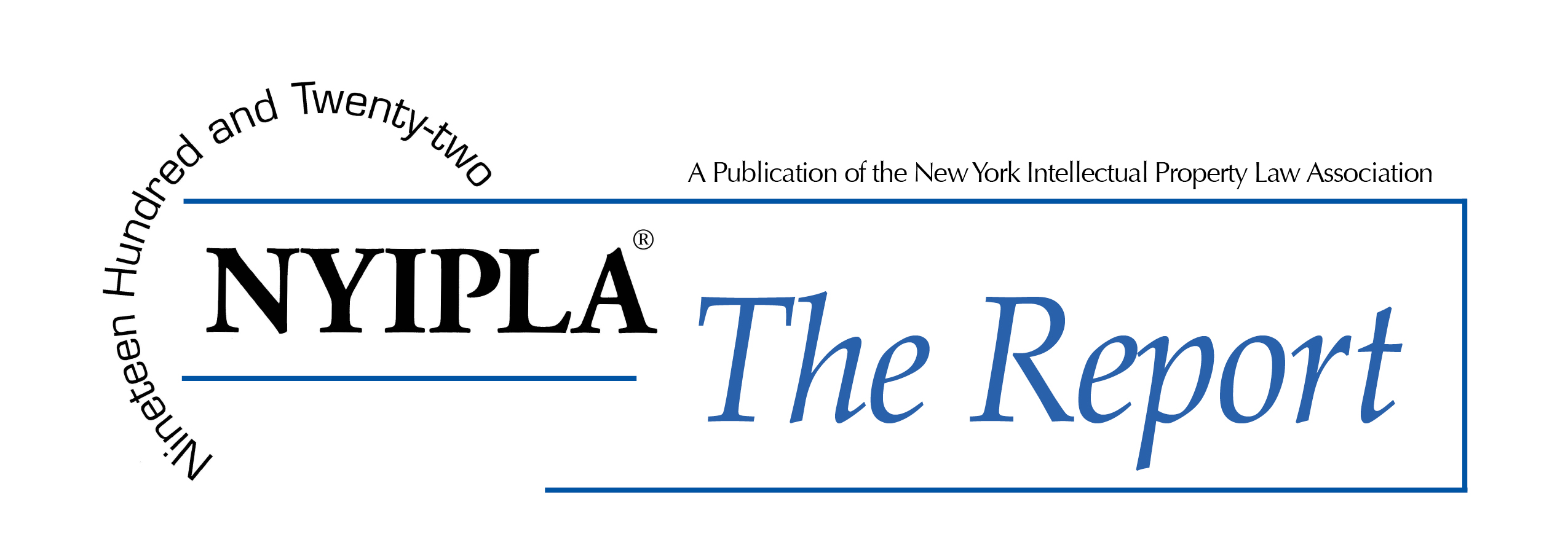|
 Spring 2025 Spring 2025
|
NYIPLA The Report
|
|
NYIPLA President's Corner
By: Patrice P. Jean
I am writing to you as the Immediate Past President of the NYIPLA and I want to take a moment to thank all of you for your support and contributions during my term. Read More>>
|
|
Link at Your Own Risk: Navigating GPL Copyleft Obligations in Contemporary Modular Software Architectures
By: Jonathan Berschadsky and Rhett A. Sexton
You’ve built a cutting-edge software product—but could a simple technical choice expose your proprietary code to open-source obligations? The GNU General Public License (GPL), one of the most widely used open-source licenses, requires developers to share their source code if their software is considered a “derivative work” of GPL-covered code. Read More>>
|
The Jack Daniel's Hangover: Defining "Trademark Use" & the Future of the Rogers Test in Light of the Supreme Court's Decision
By: Kehlee Amicon, New York Law School
Jack Daniel’s is one of the most well-known names in whiskey.1 The 150-year-old liquor emerged from prohibition and World War II as a rock and roll music staple that thrust the whiskey into the spotlight.2 Aside from its appeal behind the bar, Jack Daniel’s has manifested beyond the bottle in the form of branded merchandise,3 song lyrics,4 and even virtual reality experiences.5 So it would be no surprise to find the whiskey that graced the hands of Frank Sinatra and Axl Rose6 to now be gracing the jaws of your canine… right?. Read More>> |
|
Crayons, Contests, & Copyright: Contracting to use a Child's Creative Work
By: Kaelyn Timmins-Reed, Chapman University Dale E. Fowler School of Law
From crayon drawings on a parent’s refrigerator to an award-winning short film by a fourteen-year-old, children and young people under the age of eighteen are constantly creating, and society encourages them to create.[1] Though children have no affirmative legal “right to create,” the United Nation’s Convention on the Rights of the Child states that, subject to certain restrictions, children “shall have the right to freedom of expression; this right shall include freedom to seek, receive and impart information and ideas of all kinds . . . either orally, in writing or in print, in the form of art, or through any other media of the child’s choice.”[2] The legislative history behind the Convention suggests that it was intended to recognize a core concept of contemporary childhood—that a child “is not only an object of care and concern but also a subject whose rights should be respected.”[3] One member of the committee for the adoption of the Convention on the Rights of the Child noted, “[g]enuine effort should be made to seek out the positive aspects of youthful expression and channel it to useful ends.”[4] Read More>>
|
|
Patenting to Infinity and Beyond: An Analysis of Potential Patent Protections for Commercialized Space Inventions
By: Laura Ospina, Villanova University Charles Widger School of Law
The exploration of Outer Space began in the 1950s with the commencement of the Space Race between the United States and Soviet Union.[1] Since then, the development of space technologies has allowed multiple nations to put satellites into space, explore the moon, reach Jupiter, and beyond.[2] In recent years, space travel has adjusted from an exploration-based regime, to a commercialized opportunity for private travel.[3] This has given private corporations, such as SpaceX and Blue Origin, opportunities for substantial profits.[4] These profits, though, stem from billions of dollars in invention investments.[5] While this has given rise to countless advancements in celestial technologies, further advancements are threatened due to the lack of patent protection that inventors face from international infringements.[6] Read More>>
|
Notable Trademark Decisions, April 2025
By: Scott Greenberg and Vrudhi Raimugia
American Policy Roundtable (“APR”) filed applications with the USPTO to register the service marks iVoter and iVoter.com on the Principal Register in connection with web-based information services in the field of public policy and political issues. The applications were approved by the USPTO Examining Attorney without any objections and published for opposition. Heritage Alliance (“Heritage”) opposed based solely on a claim of priority and likelihood of confusion with Heritage’s prior common law marks “iVoterGuide” and “iVoterGuide.com” in connection with similar web-based information services. The USPTO’s Trademark Trial and Appeal Board dismissed the opposition based on its findings that Opposer Heritage’s marks were highly descriptive and consequently Heritage’s proof of acquired distinctiveness at the time of APR’s adoption of its marks was insufficient. On appeal, the U.S. Court of Appeals for the Federal Circuit affirmed the Board’s decision but also suggested that the USPTO may want to reconsider its ex parte determination that APR’s marks are entitled to registration. Heritage Alliance v. American Policy Roundtable, 133 F.4th 1063, 2025 U.S. App. LEXIS 8289 (Fed. Cir. April 9, 2025). Read More>> |
|
As Time Goes By - Fostering Consonance and Harmony
By: Dale Carlson
If you can imagine this, decades ago the NYIPLA's Young Lawyers Committee was referred to by a different moniker entirely. It was called the "Committee on Consonance and Harmony in the Profession" - quite a mouthful indeed!
The reason for the rather awkward name back then was that many new IP lawyers were not necessarily young since it was often a second career opportunity for them. In any event, ever since our Association's origin in 1922, there was an impetus within the organization to foster the development of newer lawyers entering our profession. Read More>>
|
|
NYIPLA Spotlight
Read More>>
|
Welcome New Members!
and Moving Up & Moving On
Read More>>
|
|
NYIPLA Publication Committee Editorial Team
Committee Co-Chairs Giselle Ayala-Mateus, Richard Kurz, and Kathryn Bi
Board Liaison Jennifer Deneault
|
|

